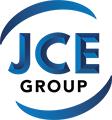 Add My Company
Add My Company
Ex Label Explained

Certification labels are applied to equipment to denote compliance with regulatory requirements and identify the parties involved in conformity, such as the manufacturer and certifying bodies.
Where independent certification is required, a certificate number is included together with the relevant markings to indicate the type of explosion protection and parameters relating to a potentially explosive atmosphere. Additional ratings are included, to signify the safe operating limits of the equipment. For traceability, the equipment type, serial number and year of manufacture, are included as well.
In this blog, we explain the critical elements of an Ex label, a detailed system that ensures the safety and compliance of equipment used in explosive atmospheres.
-
Manufacturer: The company that is responsible for the design and placing the equipment on the market, which in the label is shown as "ABC COMPANY UK".
-
CENELEC Symbol for Ex Equipment: Shows that the equipment conforms to European standards for explosive atmospheres.
-
Equipment Group: Indicates the general area of use for the equipment, such as surface equipment for explosive gas atmospheres (Group II) and is not for mining applications (indicated by absence of Group I).
-
Denotes Category of Associated Apparatus: Indicates the category of associated protection fitted within the equipment.
-
ATEX Category: Details the equipment's suitability in different zones with explosive gas or dust presence according to ATEX directive zones.
-
Denotes Special Conditions Apply: If any special conditions are required for the safe operation of the equipment, they will be noted in the instructions.
-
International Protection Rating (IP Rating): Indicates the level of protection provided against the intrusion of solid objects, dust, accidental contact, and water, in this case, IP66.
-
Ambient Temperature Range: Specifies the range of ambient temperatures within which the equipment can be safely operated.
-
Max Permitted Internal Power Dissipation: The maximum power that the equipment can dissipate internally without exceeding temperature limits
-
Year of Manufacture: The year the equipment was placed on the market.
-
Max Supply Current: The maximum current that the equipment is designed to take.
-
Max Supply Voltage: The maximum voltage at which the equipment can be safely powered
-
Serial Number: A unique identifier for this specific piece of equipment.
-
Max Surface Temperature for Dust Protection: The highest temperature that the surface of the equipment can reach, at maximum rated ambient temperature. Without a layer of dust being present on the surface of the equipment.
-
Temperature Class: The temperature classification of the equipment, indicating the maximum surface temperature the equipment can reach at maximum rated ambient temperature.
-
Equipment Type: A group of equipment having common characteristics.
-
Explosion Protected Equipment Ratings in accordance with IEC Standards: Specific codes that describe the protection method and applicable atmosphere – for explosive dust atmospheres.
-
Explosion Protected Equipment Ratings in accordance with IEC Standards: Specific codes that describe the protection method and applicable atmosphere – for explosive gas atmospheres.
-
IECEx Certificate No.: Similar to the EU-type examination certificate but specifically for the international standards set by the IEC for equipment in explosive atmospheres.
-
EU Type Examination Certificate No.: A number that references the specific certificate issued for this equipment type by a certified body, ensuring it meets EU standards.
-
CE Mark: Indicates compliance with EU regulations and directives for safety, health, and environmental protection.
-
ID number of Notified Body issuing Quality Assurance Notification to Manufacturer.
Understanding the Ex label is fundamental for ensuring the safety of equipment used in explosive atmospheres. Each element of the label we've discussed—ranging from the manufacturer's information, regulatory compliance symbols, to specific operational limits—works collectively to provide a clear and comprehensive guide to the equipment’s capabilities and safety features. This labeling not only helps in maintaining regulatory compliance but also supports the proper usage and integration of such equipment in its designated hazardous environments. By adhering to these details, companies can significantly mitigate risks associated with explosive atmospheres, thus protecting both human lives and property.
At JCE Group, we design, manufacture and install equipment and components certified in accordance with ATEX, IECEx, UKEX, and EAC. Our certifications cover a wide range of electrical control systems and components, designed for both Zone 1, Zone 2, Zone 21, and Zone 22 hazardous areas.
For more information on Ex Label Explained talk to JCE Group (UK) Ltd
